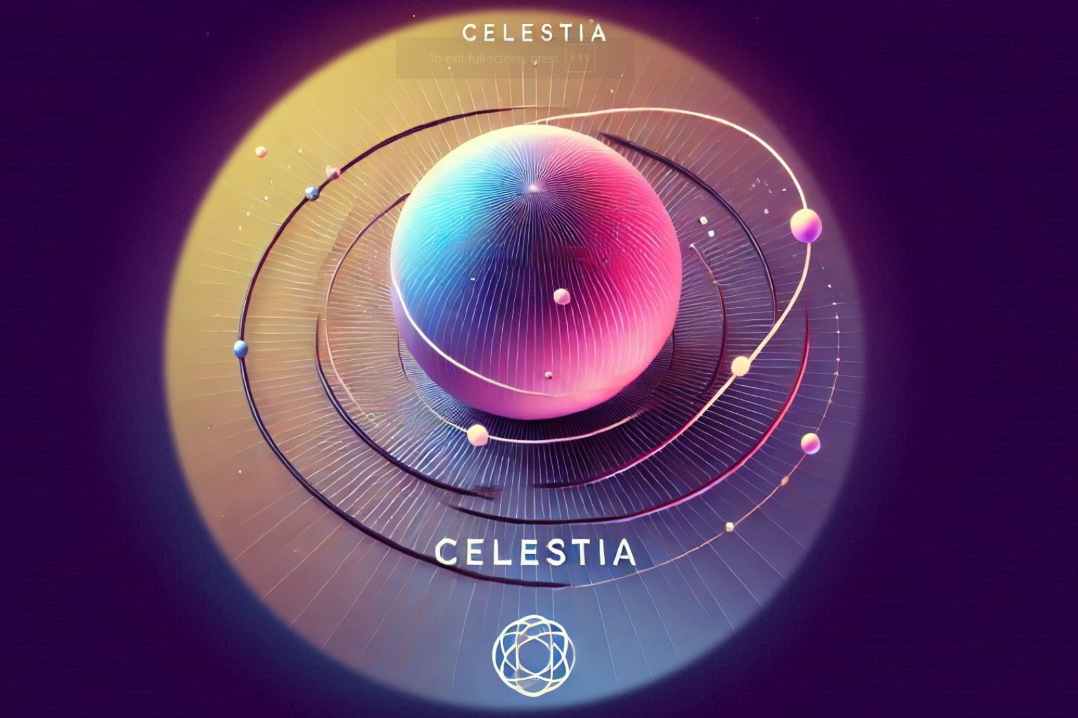2024-07-10

Celestia is a platform
for building modular blockchains. It designed to create a modular approach to
blockchain architecture.
Unlike traditional
blockchains that bundle consensus, data availability, and execution into a
single layer, Celestia separates these functions, providing a more scalable and
flexible infrastructure.
Modular
Design of a modular
blockchain consist of:
Consensus Layer
This is responsible for agreeing on the order of
transactions. In Celestia, the consensus layer primarily focuses on ordering
data without being concerned about transaction execution.
Data Availability Layer
Ensures that data related to transactions is available and can be accessed by nodes in the network. This is critical for enabling nodes to validate transactions independently.
Execution Layer
Handles the computation of transactions. This layer
is separate and can be specific to different applications. Developers can build
execution layers that best suit their applications' needs, which can run atop
Celestia’s consensus and data availability layers.
Advantages of modular blockchains
Modular
blockchains help increase scalability
By decoupling these
layers, Celestia allows each layer to scale independently. For instance,
increasing data availability does not require changes to consensus mechanisms.
Modular
blockchains make blockchains customizable
Developers can choose
different execution layers depending on their requirements, without needing to
maintain their own consensus or data availability layers.
With separate layers,
the security and maintenance of each layer can be managed more effectively,
reducing the complexity inherent in blockchains that combine all these
functions.
Modular
blockchains benefit rollups.
Celestia provides a
foundational layer where various execution environments, like rollups, can be
built.
Rollups, which are layer
2 solutions that perform transaction execution off the main chain but post
transaction data back to it, benefit greatly from this. They can ensure their
data is available and rely on Celestia for consensus.
TIA token
utilities
Celestia's TIA token serves several key utility functions within the Celestia blockchain ecosystem. Here are the main utilities of the TIA token.
Staking
and Security
TIA tokens are used for staking by validators to secure the network. Validators need to stake TIA tokens as collateral to participate in the consensus process, which helps secure the network and validate transactions. In return, they earn rewards in the form of additional TIA tokens.
Transaction
Fees
TIA tokens are used to pay transaction fees within the Celestia network. This incentivizes validators to include transactions in blocks and helps prevent spam transactions by requiring a fee for network usage.
Paying for Blobspace
Rollup developers use TIA to pay for data availability services on Celestia by submitting PayForBlobs transactions.
Governance
TIA tokens enable holders to participate in the governance of the Celestia network. Token holders can propose and vote on changes to the protocol, such as upgrades, parameter adjustments, and other important decisions that affect the future of the network.
Incentives
and Rewards
TIA tokens are used to
reward participants who contribute to the network, such as developers,
validators, and other contributors. These incentives help encourage active
participation and contribution to the ecosystem.
Interoperability
and Cross-chain Operations
TIA tokens can be used
in cross-chain operations, facilitating interoperability between Celestia and
other blockchain networks. This enhances the utility of TIA tokens by enabling
them to be used in various decentralized applications (dApps) and services
across different blockchain ecosystems.
Additionally, TIA has a fixed supply at genesis, an inflation schedule starting at 8% in the first year and decreasing annually until it reaches a floor of 1.5%.
Conclusion
Celestia aims to make
deploying a blockchain as easy as deploying a smart contract, and TIA is
central to this vision, providing the economic and security model for the
network’s operation.
Celestia’s modular
blockchain vision is the future of blockchain technology because it represents
a shift toward a "layered" blockchain architecture where different
functionalities are handled by specialized layers.